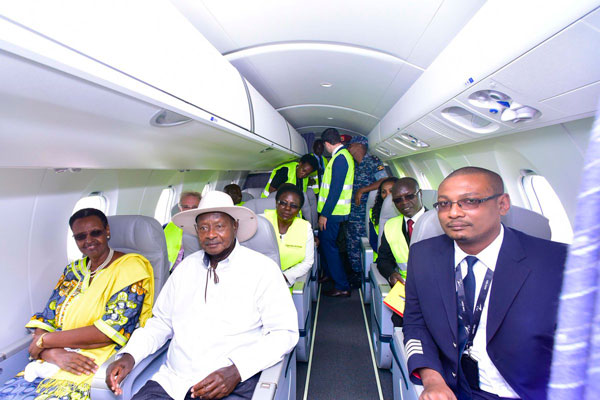
Ethiopian Airlines has signed a shareholding agreement with Zambia’s main development agency to re-launch the southern African country’s flag carrier at an initial cost of US$30 million, a step that will see the Horn of Africa leading airline acquire 45% stake in Zambia Airways, which is set to be re-launched after more than two decades on the ground.
Under the new pact signed last year, the Zambian government will be the majority shareholder with a 55% stake, with Ethiopian Airlines taking the rest 45% stake. The Airline is also seeking to set up hubs in Southern, Central and the Horn of Africa.
Ethiopian Airlines helped launch ASKY Airlines in the West African country of Togo and then acquired a 49% stake in Malawi’s flag carrier in southern Africa in 2013.
Ethiopian carrier is also said to be in talks with Chad, Djibouti, Congo Republic, Democratic Republic of Congo, Equatorial Guinea and Guinea to set up carriers through joint ventures or secure landing spots. It also aimed to create a new airline in Mozambique that it will fully own.
In East Africa, Ethiopian Airlines flies to Nairobi, Entebbe, Kigali and Tanzania tightening competition on Kenya Airways, RwandAir, and Air Tanzania.
In addition, Ethiopian Airlines has direct flights between Juba and Entebbe – the route that has existed since 2014 following the demise of Air Uganda.
This development in the region’s aviation industry means that Uganda Airlines has to put up a serious fight based on the quality of services such as timely departure so as to capture a good share of the aviation business.
We are ready for competition
Cornwell Muleya, the technical advisor at the Uganda Airlines said the carrier is ready to compete with the established airlines in the region.
He, however, said if the carrier is to succeed, then, it must make the right decision, right investment, right funding as well as ensure that there are right people to run the airline.
“If we do all those things which make an attractive airline, then it doesn’t matter what the competition does because automatically customers will want to go with the one who offers the best service,” he said.
Uganda Airlines is pinning its growth on the local population that is estimated to be spending slightly over US$400million on flights annually.
Currently, Entebbe International Airport handles more than 1.8million customers, shared among more than 18 airlines.
Ephraim Bagyenda, the CEO at the Uganda Airlines, said though the carrier may not necessarily make huge sums of money, it will help in the growth of other sectors of the economy.
“The airline will promote agriculture export to support the economy, market the country for tourism, and provide employment to many Ugandans,” he said.
Uganda’s export that consists mainly of agricultural products has been growing over the last five years from merely US$2.7bn in 2014 to US$3.6bn in 2018.
Similarly, tourism has continued to register growth in earnings from US$1.1bn in 2013 to US$1.4bn in 2018.
Financial analysts said it would be prudent for the Uganda Airlines to share their strategy on whether they would be targeting the low-cost customers or premium customers.
“Despite of the many flights on the Entebbe-Nairobi route, prices of the tickets are still quite expensive,” said Aeko Ongodia, CEO of Xeno technologies. “Flying from London to Barcelona is possibly 45 euros yet the distance is much longer.”
Ongodia said carriers intending to compete on premium rates such as those offered by Kenya Airways and RwandAir will need to do a thorough analysis on whether the specified routes have enough business class to occupy the business section.
However, he said there is still room for the growth of the low cost carriers in the region due to limited number of competitors. Currently, it is only Jambo Jet that operates a low-cost carrier.
****
 The Independent Uganda: You get the Truth we Pay the Price
The Independent Uganda: You get the Truth we Pay the Price



